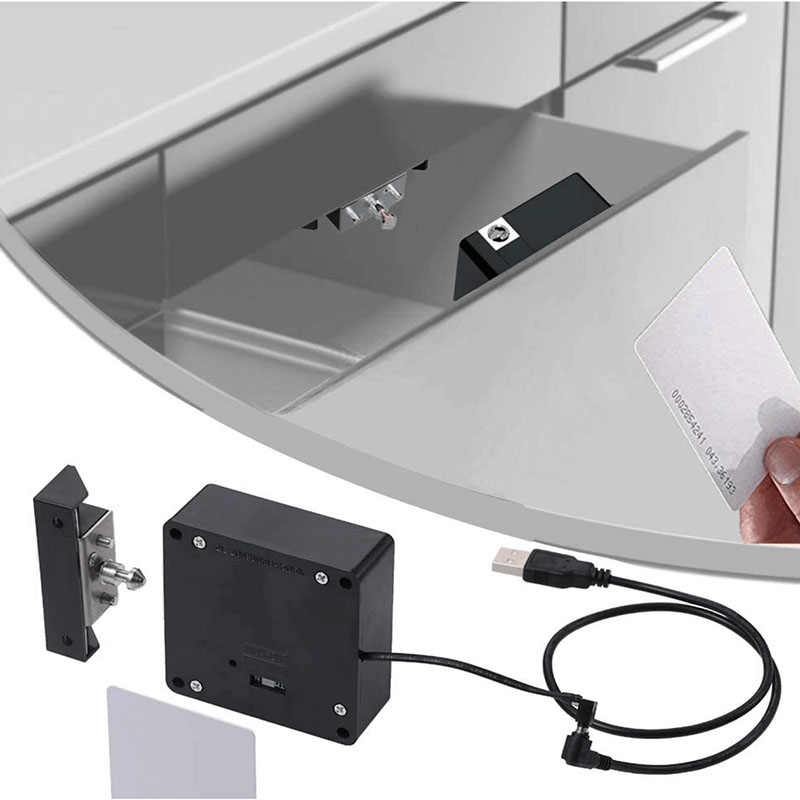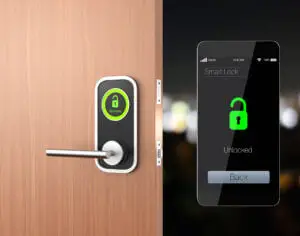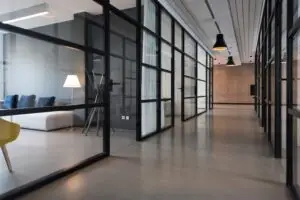Common faults of door locks, door locks are most used in daily life, because the parts are closed in the lock body, and no installation is required during use, so there are few faults. However, if the lock is used outdoors for a long time, there will be failures such as the lock cylinder and the lock beam not jumping.
Next, we will provide you with corresponding answers to the faults of the more common door lock mechanical parts:
1. The lock cylinder does not turn
The failure of the lock cylinder to turn often occurs when the door is locked out for a long time and is not often opened. The lock has been exposed to wind and rain for a long time, and corrosion and accumulated dirt have appeared between the lock cylinder and the lock body, making the lock cylinder unable to rotate.
Before eliminating the fault, it should be taken seriously to check whether the key holder is the key to the key and then eliminate the fault after confirming that there is no doubt.
The way to expel it is to put in a small amount of diesel or fuel, wait a while, insert the key, and try to open it. If it cannot be opened, add more diesel or fuel. During the foaming period, use the key to gently turn back and forth until all the movement is closed. Do not use too much force and break the key.
In addition, there is also the phenomenon that the lock core does not turn due to damage to the key tartar. At this time, you should carefully search for the damaged part of the tartar. If the damage is small, you can still unlock it after repairing it; if the damage is large, you should find other spare keys to unlock it.

2. The insertion and removal of the key are not flexible
The key has been used for a long time, and the plugging and unplugging are not very flexible. You can sprinkle some graphite pen face {green ash} in the keyhole, and then switch it on and off a few times. Do not add engine oil to the keyhole, as this will affect the movement of the pins and cause unexpected opening failures.
3. The locking beam does not jump
The failure of the lock beam not to jump is mostly caused by the excessive tolerance of the shape and position of the lock beam. The locking beam and one side of the lock beam hole are exposed to scrape and squeeze. In addition, rust and accumulated dirt make the lock beam unable to jump up.
Removal method: Insert the key into the lock cylinder, turn it to the open position, and do not move, gently beat down the lock body with a small hammer or pull down the lock body with force. If the vibration cannot be opened, you can add a small amount of fuel or diesel oil to the lock beam, and then beat it lightly until the lock beam jumps out. After the lock beam jumps out, use a soft hammer to repair the lock beam, and it can be used after repair.
4. The key breaks into the lock body
The failure of the key breaking into the lock body occurs more frequently, and the removal method should be determined according to the working conditions of the key breaking.
⑴The key is broken into the lock body from the root, and a section is left in the chest of the lock. It can be pinched out with small tweezers or tools such as needle-nose pliers.
⑵The key breaks into the lock core from the middle, and it cannot be shaken out. In this case, the only way to remove the seven orifice seals on the lock body is to shake out the pins and take out the lock core and the broken key together, then reinstall the lock core, pins, etc., and seal them with aluminum wire.
Common Failures of Drawer Locks

1. The key is flexible when inserted, but not flexible when pulled out.
This kind of end is mostly caused by the deformation of the pin plate. The deformation of the pin plate causes the axial gap of the lock cylinder to be too large. The removal method is to remove the lock, adjust the pin or add pads to eliminate the gap.
2. The drawer is open and flexible, and the opening resistance increases after the drawer is pushed in.
This is a fault caused by installation. During installation, the lock tongue groove of the upper beam of the drawer is cut too far inward, and the lock tongue scrapes the edge of the lock tongue groove, which increases the opening resistance. It is only necessary to repair the parallel branch of the lock tongue groove on the upper beam of the drawer.
3. After a long period of use, the key is not flexible to insert and remove.
You can add graphite powder {green ash} or candles to the keyhole like a lock. And try to turn the keys a few times slowly. That may be caused by a long time of using or non-using, the mechanical part of the cylinder is not so flexible.
If still not workable, you can put the key in the graphite power {green ash} or candles for a little longer time and then check again. Make sure not to use too hard turning, in case of breaking the key.
Tongue Tumblers Lock Single Common Faults

1. After the door is locked, the key and the knob are not flexible to open.
The reason is that the installation between the lock box and the lock body is scraped, or the door panel is deformed, which increases the frictional resistance on the lock box and a certain side of the lock tongue. It can be solved by adjusting the position of the lockbox.
2. It lacks the function of “guaranteeing the inside from the outside”.
The fault is caused by the reverse installation of the key dial {the key dial should point to the deadbolt when installed}. The removal method is to reinstall.
Please strictly follow the user manual or instructions for the lock installation. If have no idea about this, please contact your supplier for the video tutorial.
3. The rotation of the lock cylinder is not flexible.
Due to the large temperature difference between the inside and outside of the door in cold winter, the lock core is exposed to corrosion and other phenomena, which makes the lock core rotate inflexibly.
You can apply candle or graphite pen powder on the key, insert it into the lock core to turn it, and increase the lubricating oil of the lock core and lock body. Do not add oil to the key tartar or lock cylinder, so as not to affect the elasticity of the shotgun spring.
Conclusion
SRN TECH has a professional R&D and after-sale technical support team that can solve our worldwide customer’s questions during their use. We provide lock lifetime online technic support for you. Contact us to get more details now!





